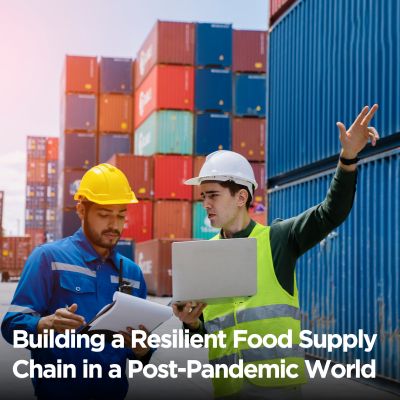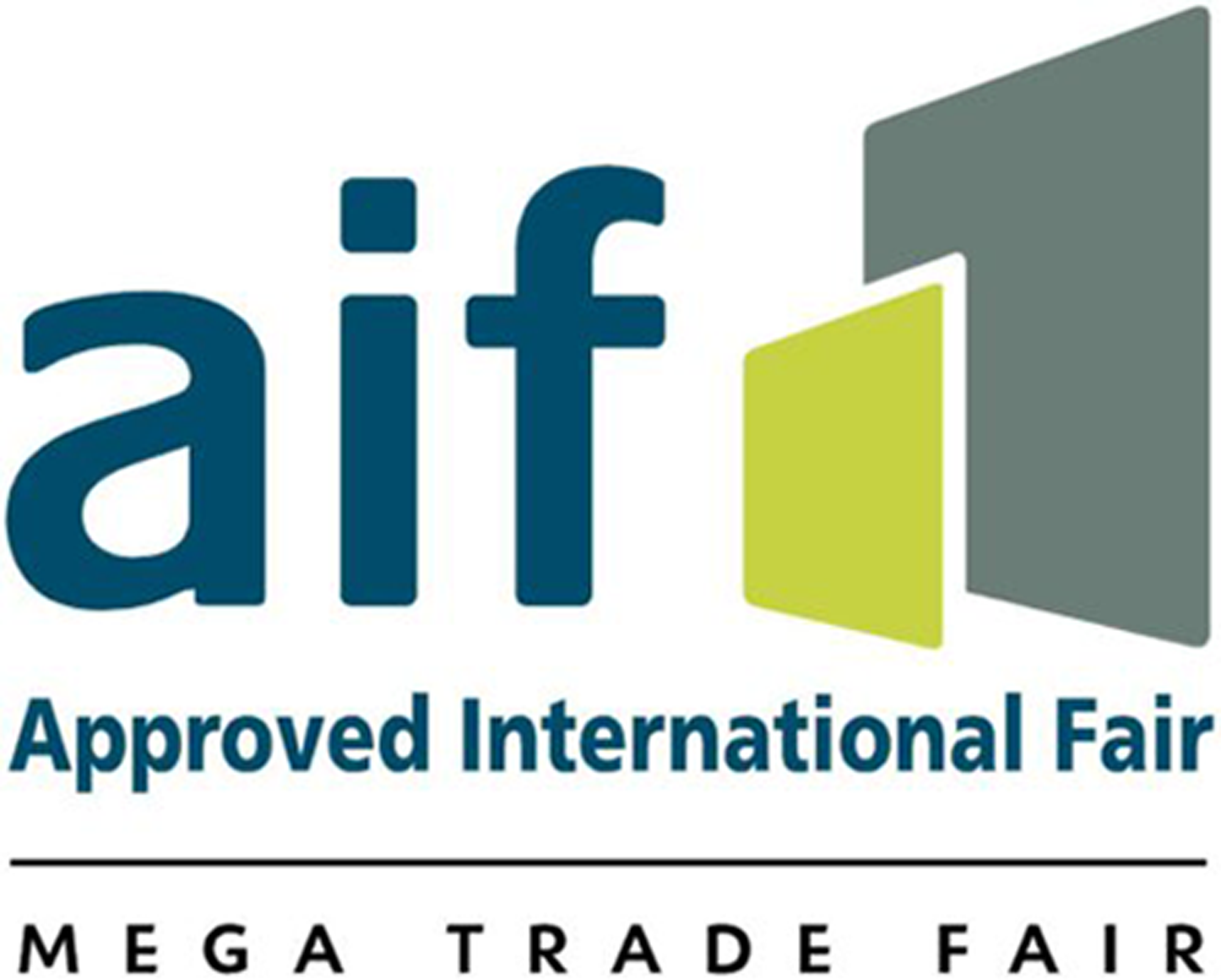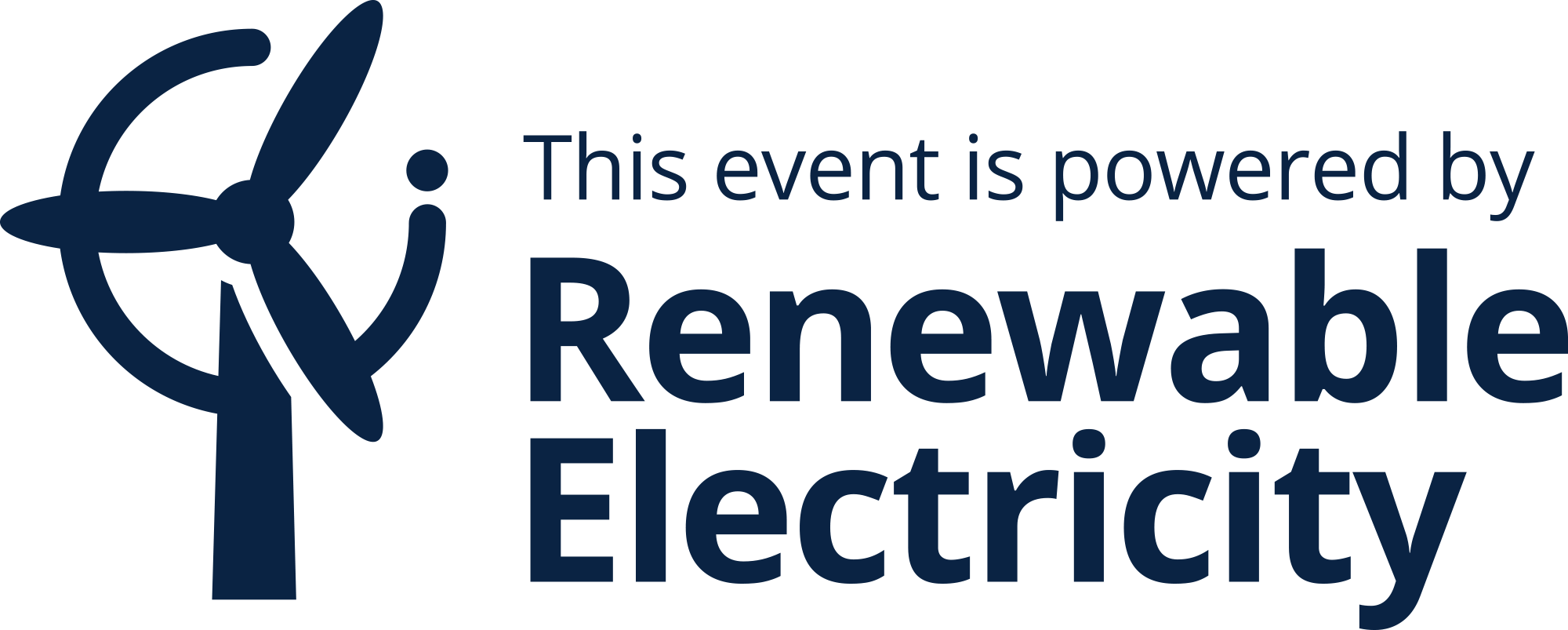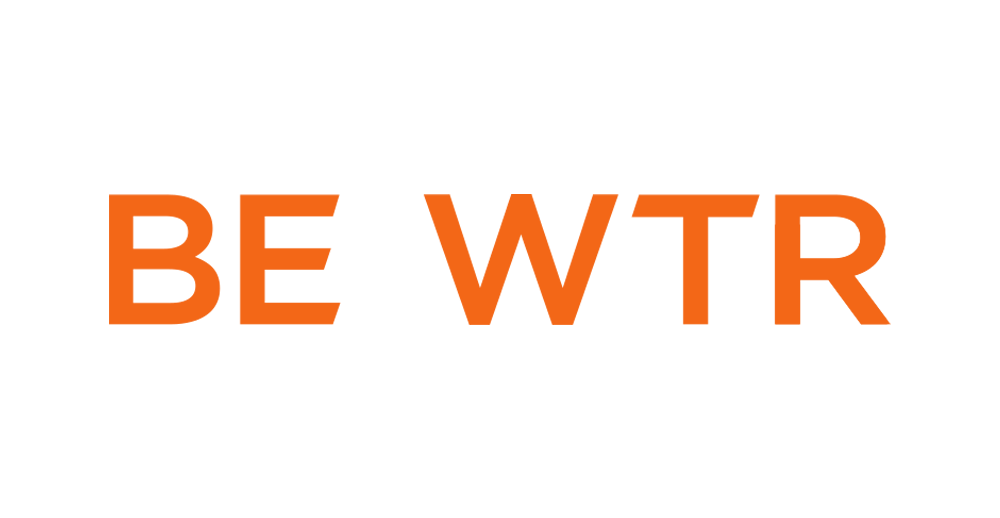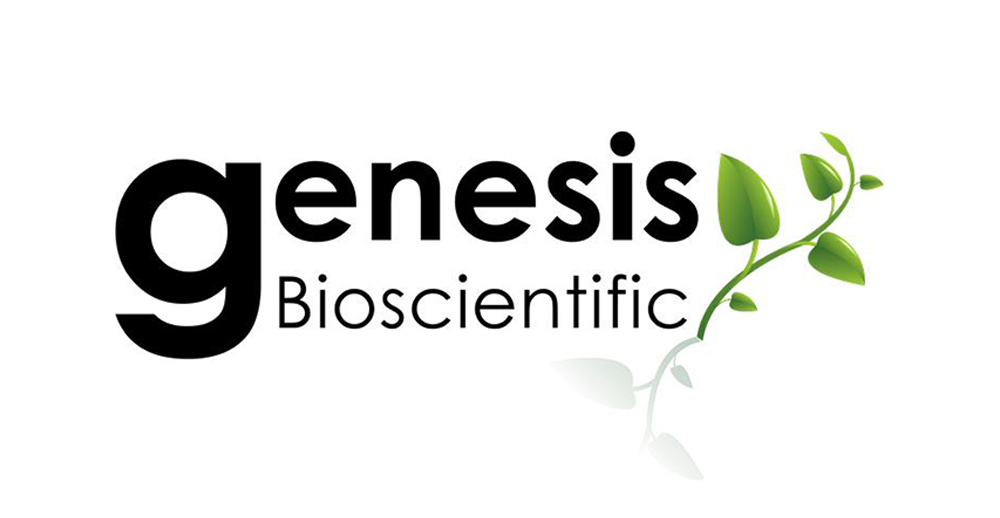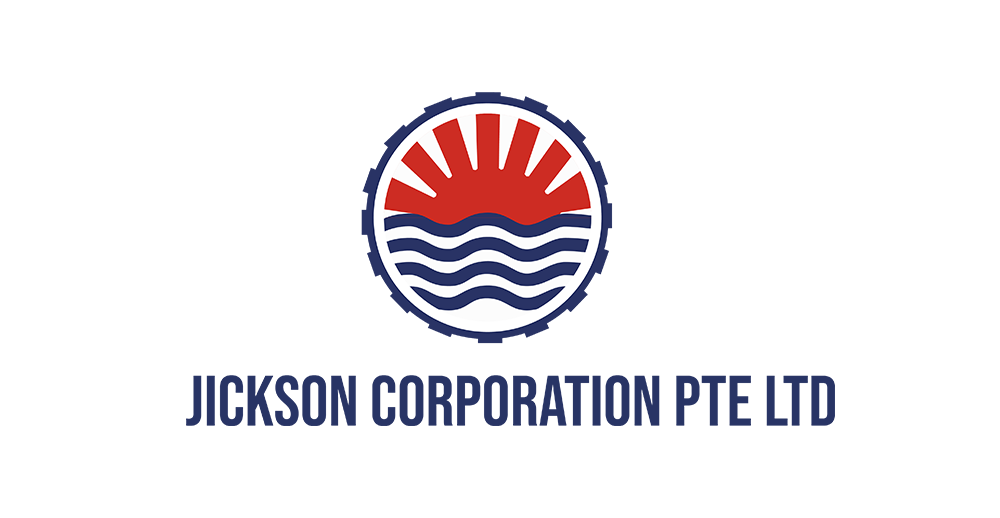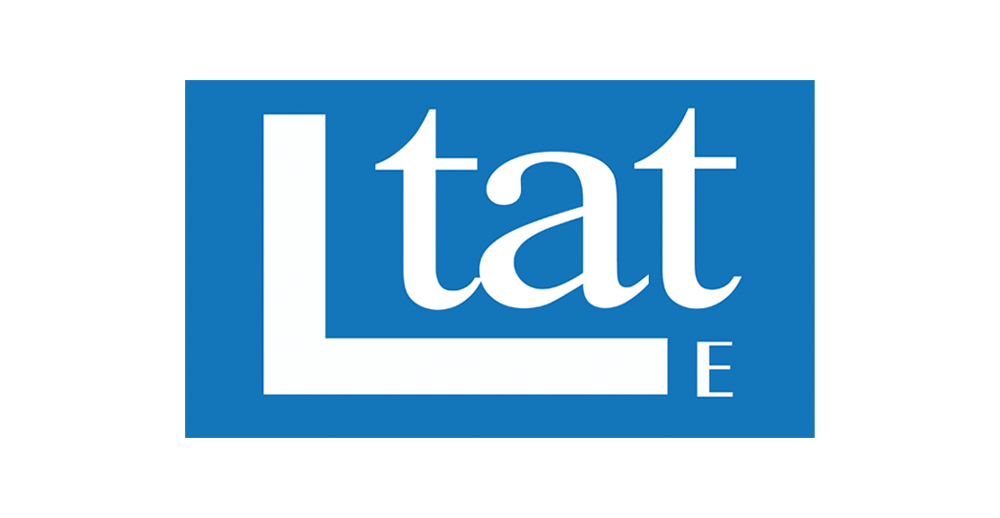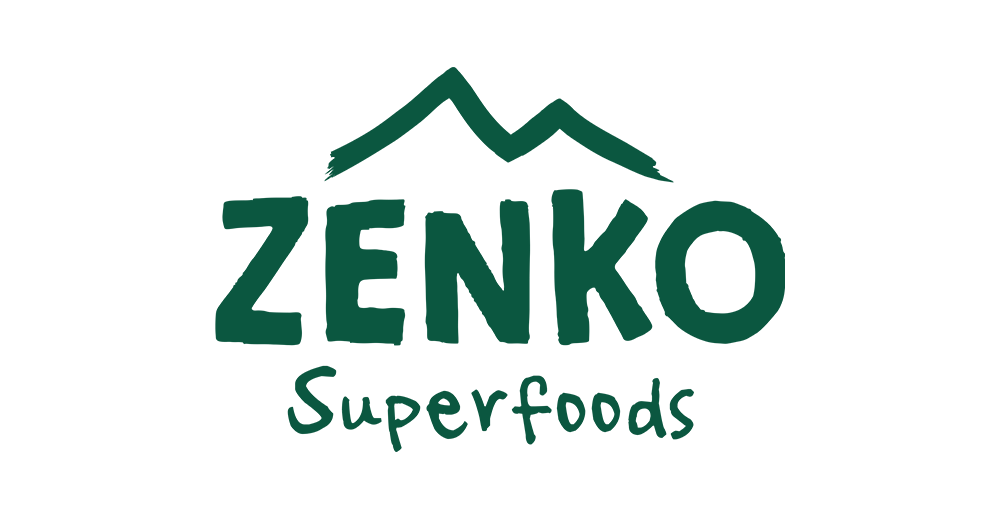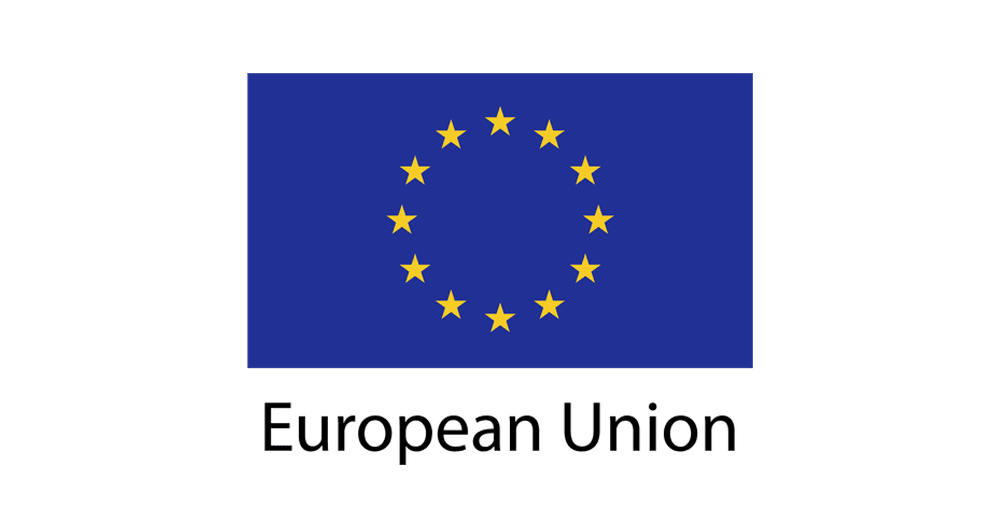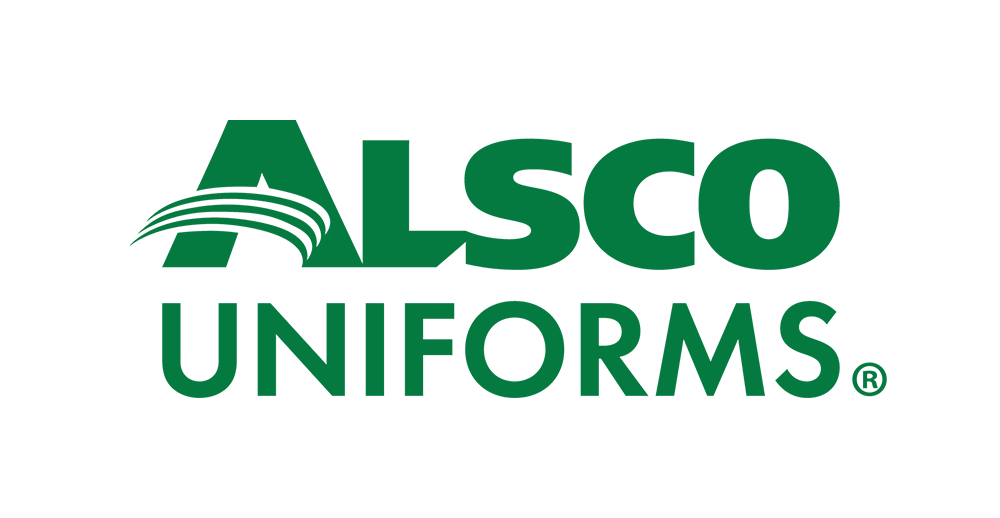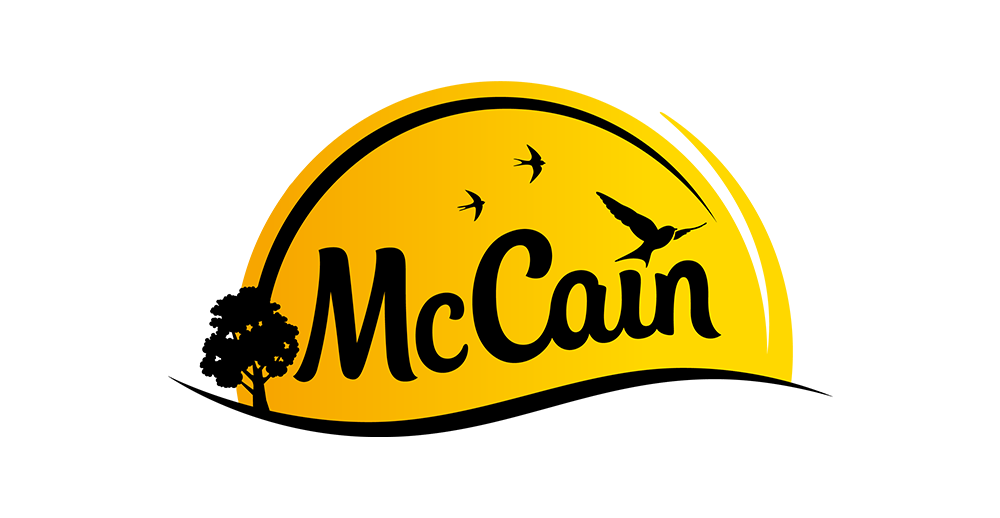The Fast-Moving Consumer Goods (FMCG) sector is one of the global economy’s largest and most active industries. It covers everyday essentials like food, beverages, personal care products, and household goods, reaching billions of consumers worldwide.
With its fast sales and strong competition, the industry supports economic growth, creates jobs, and drives innovation.
As we move further into 2025, understanding the FMCG sector is more important than ever. Consumer habits, digital advancements, sustainability concerns, and supply chain issues are changing companies’ operations.
To keep up, businesses need to stay informed and ready to adapt. This article will cover what’s happening in the FMCG sector in 2025, how consumer preferences are changing, and the challenges and opportunities ahead.
Whether you’re a business leader, investor, or industry professional, this guide will help you understand where FMCG is headed.
Section 1 – Overview of the FMCG Sector

The Fast-Moving Consumer Goods (FMCG) sector comprises products sold quickly and relatively cheaply. These include food, beverages, personal care items, household goods, and over-the-counter medicines.
The industry’s fast-paced nature and high consumer demand make it one of the most dynamic sectors in the global economy.
Many leading companies, such as Procter & Gamble, Unilever, Nestlé, PepsiCo, and Coca-Cola, dominate the FMCG market by consistently innovating and expanding their reach.
The FMCG market analysis highlights its significant role in economic growth. The sector supports millions of jobs across manufacturing, logistics, retail, and marketing while driving consumer spending worldwide.
In 2021, the global FMCG market was valued at $11,490.9 billion and is projected to reach $18,939.4 billion by 2031, growing at a CAGR of 5.1% from 2022 to 2031.
Factors such as urbanization, rising disposable incomes, e-commerce growth, and increasing demand for convenience products contribute to this expansion.
However, significant challenges like supply chain disruptions, inflationary pressures, and changing customer expectations continue to test businesses.
In response, companies are doubling on digital transformation, implementing sustainable operations, and reinventing retail approaches to maintain their competitive edge in this dynamic market.
For businesses and professionals looking to stay informed about industry trends and networking opportunities, events like FHA Food & Beverage offer insights into the FMCG sector and its latest developments.
Section 2 – Key Trends Shaping the FMCG Sector in 2025
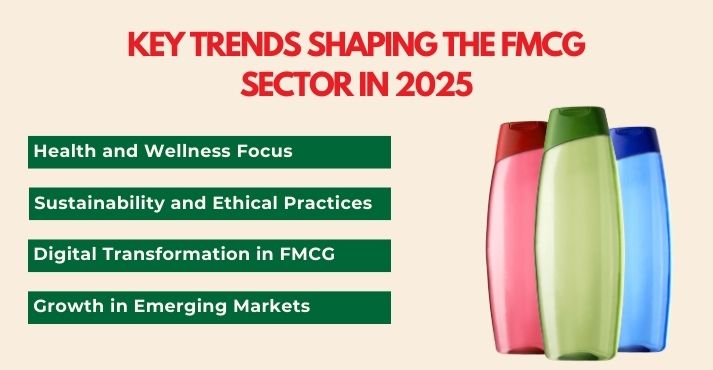
The FMCG sector is seeing major consumer preferences, technology, and market dynamics changes. Companies that respond to these developments will be in a stronger position for long-term success.
Here are some of the FMCG trends in 2025 bringing new opportunities and challenges to the industry:
Health and Wellness Focus
Consumers are becoming more selective about the foods and beverages they buy, seeking natural, organic, and functional options.
1 in 4 shoppers actively look for health benefits products, leading to greater demand for low-sugar, high-protein, plant-based, and gut-friendly choices. This change has encouraged brands to update their formulations and introduce better-for-you alternatives to stay relevant.
Natural sweeteners like stevia and monk fruit have become popular as consumers move away from artificial additives and refined sugar.
Moreover, consumers are choosing clean-label products, favoring simple, recognizable ingredients over artificial additives.
In fact, 75% of consumers are willing to pay more for clean-label ingredients, reinforcing the need for brands to focus on transparency and high-quality sourcing.
Companies prioritizing health-conscious formulations and clear labeling will be better positioned to meet changing consumer expectations.
A great real-life example of the shift toward clean-label and health-conscious products is Pirq Plant-Based RTD Beverages. When supply chain disruptions affected their erythritol supply during the COVID-19 pandemic, Pirq reformed their products.
They successfully removed erythritol while maintaining their “no added sugar” claim and increased plant-based protein content from 12g to 15g per serving.
By balancing high-quality stevia with vanilla flavor, they preserved the desired taste and achieved a successful relaunch in 2022. This shows how brands adapt to consumer demand for transparency, natural ingredients, and functional health benefits.
Sustainability and Ethical Practices
Environmental concerns influence purchase decisions, making sustainability in FMCG a primary business focus. Consumers expect brands to minimize their impact by reducing food waste, adopting ethical sourcing, and using eco-friendly packaging.
In fact, 67% of buyers consider recyclable packaging an essential factor in their purchasing choices, reinforcing the demand for sustainable alternatives.
The environmental impact of food packaging is a major concern, leading companies to replace single-use plastics with biodegradable or compostable materials. Many brands are also investing in carbon-neutral supply chains to lower emissions and reduce waste.
Ethical labor practices and fair-trade certifications are significant factors in brand loyalty, as consumers prioritize transparency and responsible sourcing. Brands that commit to sustainability meet consumer expectations and strengthen their long-term market position.
Digital Transformation in FMCG
Technology is revolutionizing FMCG operations, improving efficiency and customer engagement. AI-powered demand forecasting, automated warehousing, and personalized online shopping experiences streamline the supply chain and enhance customer satisfaction.
AI-driven marketing strategies allow brands to analyze consumer behavior in FMCG, helping them create targeted promotions and optimize product placement.
E-commerce continues to expand, with direct-to-consumer (DTC) models and rapid delivery services reshaping retail strategies.
A leading example of AI adoption in FMCG is Unilever’s use of machine learning to enhance supply chain efficiency and sustainability. Using AI, Unilever optimizes demand forecasting, reduces waste, and ensures better product availability.
The company also uses AI to develop sustainable formulations and improve packaging solutions, aligning with consumer demand for eco-friendly products.
Growth in Emerging Markets
Asia, Africa, and Latin America are becoming crucial expansion areas for FMCG brands due to rapid urbanization, rising incomes, and an expanding middle class.
In Asia-Pacific, the FMCG logistics market alone accounted for over 48.9% of the global market in 2024, driven by urban growth and e-commerce expansion.
The World Bank reports that East Asia and the Pacific is the world’s fastest urbanizing region, with an annual urbanization rate of 3%, significantly increasing demand for FMCG products and supply chain efficiency.
In Latin America, urbanization levels have reached approximately 80%, surpassing most other regions. This high concentration of urban populations is increasing demand for efficient logistics networks and e-commerce growth, particularly in Brazil and Mexico.
In Africa, the middle class is expanding, and urbanization is rising. The Middle East and North Africa (MENA) region is already 64% urbanized, creating a strong demand for improved supply chains.
To capitalize on these trends, FMCG companies are focusing on five strategic pillars: digital transformation, sustainable business practices, regional customization, direct-to-consumer channels, and supply chain resilience.
FMCG brands are adapting by offering affordable price points, smaller packaging sizes, and localized flavors to cater to diverse consumer preferences.
Additionally, companies are investing in local production facilities and distribution networks to scale operations and meet growing regional demand.
Consumer Behavior and Preferences
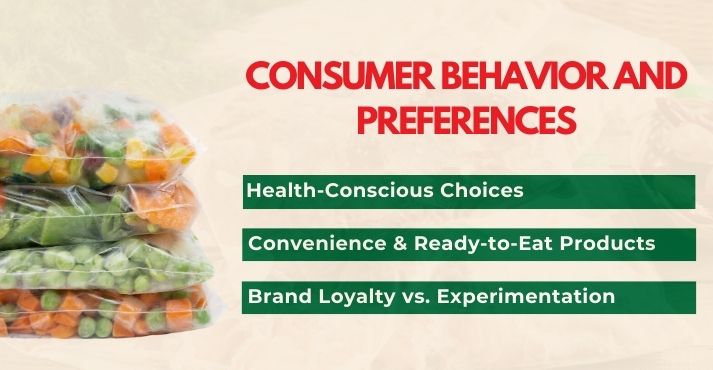
As emerging markets grow and change, so do what consumers want. Today, people are prioritizing healthier, convenient solutions and are more open to switching brands.
Companies that align with these preferences can strengthen their market presence and secure sustainable growth.
Health-Conscious Choices
People are becoming more mindful of what they eat, choosing foods with real nutrition, clean ingredients, and functional benefits. Many are cutting back on sugar, adding more protein to their diets, and seeking products that support overall well-being.
67% of consumers are increasing their protein intake, while 30% are opting for low-sugar alternatives, showing a clear shift toward healthier eating habits.
This is especially noticeable among Asian consumers seeking healthier food, where traditional diets combine with modern health-conscious trends.
Natural ingredients, probiotics, and plant-based options are becoming more popular, prompting brands to rethink their formulas and offer products that better align with today’s wellness priorities.
Convenience and Ready-to-Eat Products
Urbanization and fast-paced lifestyles are increasing the demand for on-the-go meals, meal kits, and ready-to-eat options. With more dual-income households and longer work hours, many consumers are looking for quick yet nutritious meal solutions.
In 2025, the ready-to-eat meals market is projected to exceed $636 billion in revenue, highlighting the growing reliance on convenient food choices.
To meet this demand, brands are introducing innovations in packaging, portion sizes, and food preservation. There’s a growing focus on fresh, preservative-free options that offer convenience and quality.
Nestlé, for example, launched its Lean Cuisine Origins line to cater to the rising demand for plant-based and flexitarian meals.
This range includes globally inspired dishes like Sicilian-style pesto with Lentil Pasta and Coconut Chickpea Curry, featuring meatless proteins and organic ingredients.
This shows a bigger change in the frozen food sector, where major brands are reformulating their products to prioritize health and sustainability.
Pre-packaged fresh meals and smart-label technology are also gaining popularity, allowing consumers to make informed choices while maintaining a balanced diet.
Brand Loyalty vs. Experimentation
While some consumers remain loyal to their preferred FMCG brands, younger shoppers are more open to new options, especially in categories like snacks, beverages, and personal care.
The rise of direct-to-consumer (DTC) brands and digital marketplaces has made it easier for people to explore different products, often influenced by social media trends and peer recommendations.
However, economic pressures are shaping buying habits in unexpected ways. In India, persistent food inflation has led many middle-class consumers to cut back on discretionary spending, with some swapping well-known brands for budget-friendly alternatives.
Major FMCG companies, including Nestlé India and Hindustan Unilever, have reported declines in sales volume as more consumers opt for lower-cost options.
Companies that offer quality and value are better positioned to retain consumer loyalty, mainly as affordability influences purchasing decisions.
Trust, authenticity, and digital engagement remain major factors, and brands that emphasize storytelling, sustainability, and a digital-first approach are more likely to maintain customer interest.
Section 4 – Challenges Facing the FMCG Sector
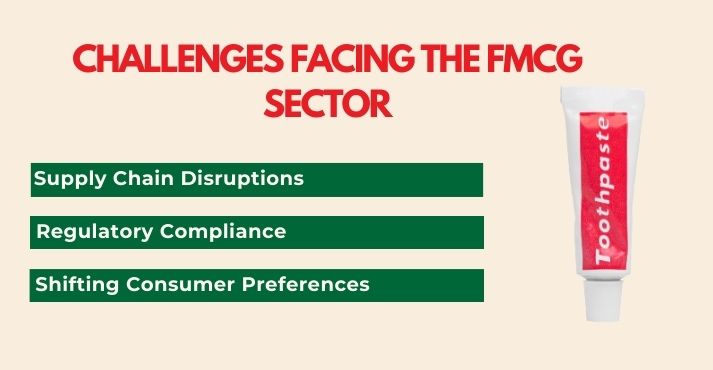
The FMCG sector is dealing with ongoing supply chain issues, stricter regulations, and changing consumer demands. Companies must find ways to stay competitive while managing rising costs and evolving market expectations.
Supply Chain Disruptions
Rising transportation costs, raw material shortages, and logistical delays make it harder for brands to maintain product availability and stable pricing. Many companies are seeking local sourcing and digital supply chain solutions to minimize risks.
Unpredictable climate conditions and geopolitical tensions continue to add pressure on businesses. As a result, companies are rethinking their logistics strategies and strengthening the food supply chain to maintain steady production and distribution.
Regulatory Compliance
Governments are enforcing stricter rules on consumer safety, ingredient transparency, and sustainable packaging. FMCG companies must keep up with changing regulations to avoid penalties and maintain consumer trust.
Adapting to these policies often requires investing in new processes and reformulating products to meet updated standards.
Additionally, with growing concerns about environmental impact, regulations around plastic use, carbon emissions, and ethical sourcing are becoming more stringent, adding another layer of complexity for brands operating across multiple regions.
Shifting Consumer Preferences
Consumers are looking for healthier, more sustainable products, but affordability is still a major factor. Brands that balance quality, cost, and innovation will likely keep customer interest.
As purchasing habits change, companies must also focus on personalization and digital engagement to maintain loyalty. Private-label brands and direct-to-consumer (DTC) models are gaining ground, giving consumers more choices and intensifying competition.
The FMCG industry challenges continue to push companies to rethink their strategies and find new ways to stay relevant in an increasingly competitive market.
Section 5 – Future Outlook and Opportunities
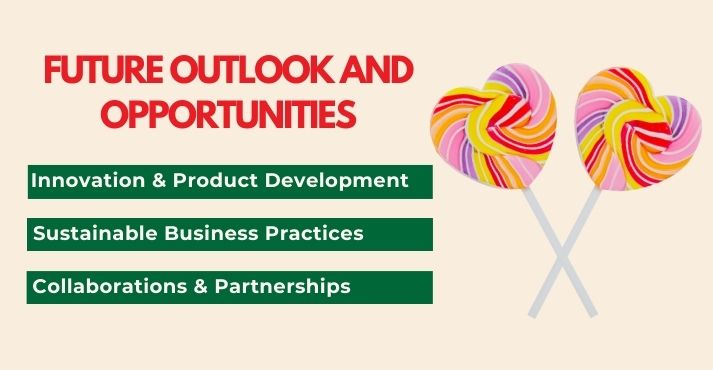
The FMCG industry is changing fast as consumer expectations shift and businesses look for new ways to stay competitive. Companies that adapt quickly from product innovation to sustainability and strategic partnerships will be better positioned for long-term success.
Innovation and Product Development
New technologies and changing consumer habits are shaping the next wave of product development.
Over 92% of businesses are using AI-driven personalization to drive growth, using data to analyze shopping patterns and create more modified options, from customized nutrition plans to targeted product recommendations.
Hybrid foods—combining plant-based ingredients with traditional products—are gaining popularity, offering various health benefits and familiar flavors.
At the same time, demand for functional foods, alternative proteins, and nutrient-rich snacks continues to grow as people focus more on wellness and convenience.
Sustainable Business Practices
Sustainability is becoming a bigger priority, with brands working to reduce waste, lower emissions, and improve packaging. Many companies are moving toward biodegradable, recyclable, or reusable materials to reduce plastic waste.
Logistics and supply chains are also being overhauled. More businesses are investing in electric delivery vehicles, optimizing shipping routes, and switching to energy-efficient manufacturing to meet both environmental goals and regulatory requirements.
Collaborations and Partnerships
Companies are teaming up in new ways to expand their reach and improve operations. Food brands are partnering with tech firms to enhance direct-to-consumer models, use smart packaging, and personalized shopping experiences.
Retailers and manufacturers are also working together to improve supply chains, offering more seamless shopping experiences across online and physical stores.
By collaborating with startups, sustainability advocates, and logistics providers, brands can find new ways to stay competitive in a changing market.
Conclusion
The FMCG sector is undergoing major changes as consumers seek healthier, more affordable, and more convenient options.
Rising costs and supply chain challenges are making it harder for brands to keep prices stable, while digital trends and sustainability efforts are shaping new business strategies.
Companies must focus on smart innovation through AI-driven personalization, eco-friendly packaging, or strong partnerships to stay ahead. Those who can balance quality, value, and consumer trust will be best positioned to succeed in this changing market.


